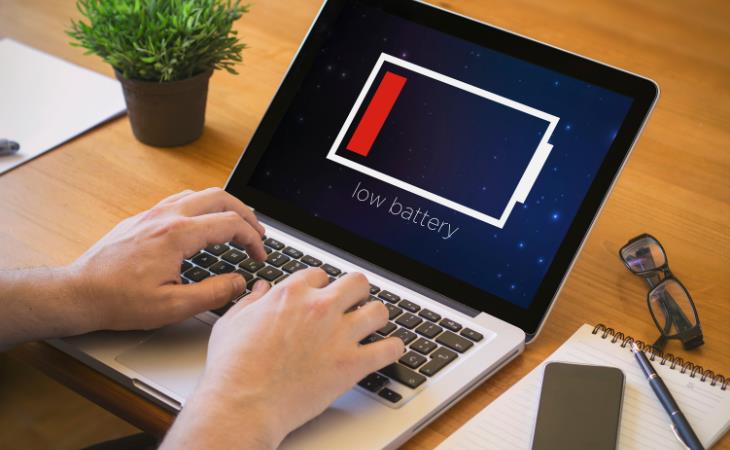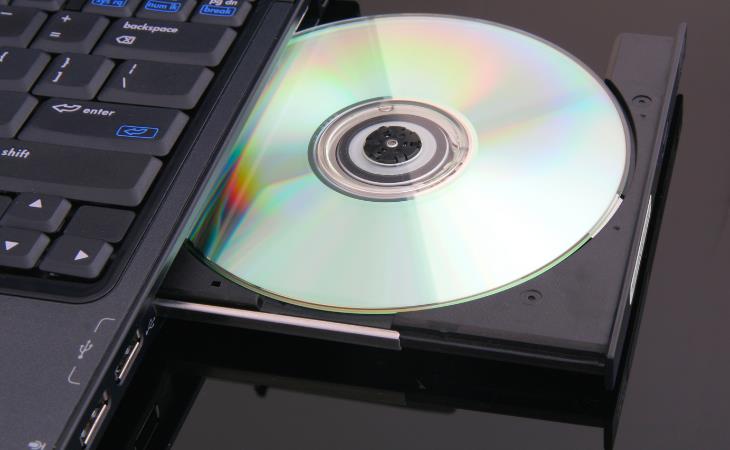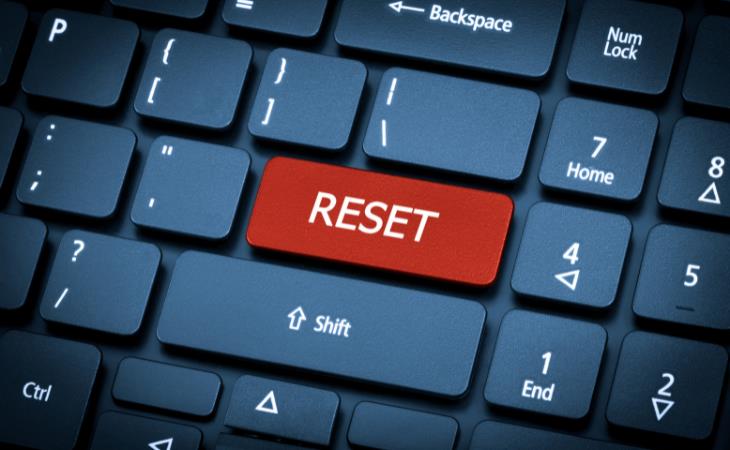The first thing to rule out is a power supply issue. Sometimes, it’s as simple as having the wrong charger plugged in. Laptops require specific voltages and amperages, and if the adapter doesn’t match, the laptop won’t receive the necessary power.
- Confirm compatibility: Ensure you’re using the correct adapter for your laptop model. If you have multiple laptops or devices, it’s easy to mix them up.
- Check indicator lights: If your laptop’s power light is on, the power supply is likely okay. If both the laptop’s and adapter’s lights are on, the issue might lie elsewhere, possibly with the battery.
Having the right power supply in place can save a lot of troubleshooting time, so double-checking this step can prevent unnecessary headaches.
2. Verify the battery’s condition
When a laptop doesn’t turn on, sometimes it’s as simple as a drained or faulty battery. If your laptop hasn’t been plugged in, ensure that the battery has a charge.
- Check battery charge: Some laptops won’t power on if the battery is completely dead. Plug the charger in for a while and try powering it on again.
- Consider a portable charger: If you often use your laptop on the go, a portable battery charger can be a lifesaver.
- Test without the battery: For laptops with removable batteries, try taking the battery out and starting the laptop with the power adapter alone. This can help determine if the battery is the issue.
3. Disconnect docking stations and external peripherals
If your laptop is connected to a docking station or other external devices, these could be causing the issue. Faulty connections or damaged ports in the docking station can sometimes interfere with the power supply.
- Directly connect power: Remove the laptop from the docking station and plug the charger directly into the laptop.
- Remove USB devices: Disconnect any USB devices or other peripherals to eliminate the chance that they’re causing a conflict.
If the laptop powers on without the docking station, you may need to repair or replace the docking station.
4. Inspect the screen for issues
One common misinterpretation is assuming the laptop is off when the screen is actually black. This can be due to issues with the display or settings.
- Test screen brightness: Use the brightness adjustment keys to increase the brightness.
- Disconnect external monitors: If you’re using a secondary monitor, disconnect it and check if the laptop screen shows anything.
- Try an external monitor: Connect a different monitor to the laptop’s HDMI or display port. If the external monitor works, the issue may be with the laptop’s screen or graphics card.
If your laptop screen remains dark but the power light and keyboard backlights are on, it might be time to consult a professional for a screen or display adapter issue.
5. Clean out cooling vents
Laptops are built with safety mechanisms that prevent them from operating if components overheat. Dust or blockages in the cooling vents can cause overheating, prompting the laptop to shut down as a precaution.
- Check ventilation: Make sure nothing is blocking the laptop’s cooling vents. Avoid using it on soft surfaces like beds or couches that can restrict airflow.
- Clean the vents: Use compressed air to gently clean dust and debris from the vents, allowing proper cooling.
Keeping your laptop ventilated can extend its life and prevent overheating-related shutdowns.
6. Remove any bootable media
Sometimes, if you leave a bootable USB or DVD in your laptop, it might try to start up from that instead of your main drive. This can lead to confusing errors or the laptop not booting up at all.
Check drives: Remove any USB drives, DVDs, or memory cards from the laptop and try restarting it.
This quick check can save time and ensure that the laptop boots from the correct drive.
7. Listen for beep codes
Laptops often emit beep codes when they encounter hardware failures. These codes are designed to help diagnose issues with components such as RAM, the video card, or the processor.
- Count the beeps: Pay attention to the number and sequence of beeps when you try to turn the laptop on.
- Check the manufacturer’s guide: Refer to your laptop’s manual or the manufacturer’s website to decode the beeps. Each pattern corresponds to a specific hardware problem.
This step can guide you in pinpointing faulty components if your laptop won’t start.
8. Drain residual electricity
Sometimes, your laptop may simply need to reset its internal circuits. Static electricity can build up in the components, leading to startup issues.
- Perform a hard reset: Remove the battery (if removable), disconnect the charger, and press the power button for 30 seconds.
- Reconnect and restart: Plug in the power adapter, wait a few seconds, and try to power the laptop on again.
This reset process can help resolve minor glitches that prevent the laptop from starting up.
9. Replace the CMOS battery
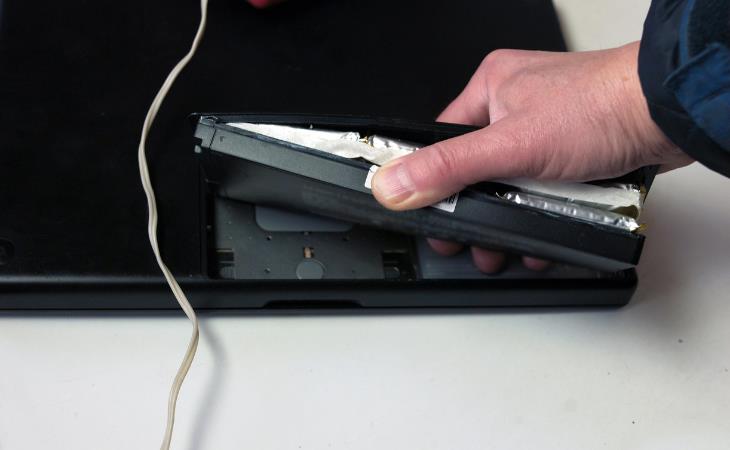
The CMOS battery powers the laptop’s BIOS, allowing it to retain essential startup information. If the CMOS battery is dead, the laptop may fail to start.
- Signs of a dead CMOS battery: A dead CMOS battery can manifest in several ways: the system clock resetting, BIOS settings reverting to default, boot errors, and difficulty booting the computer. You might also encounter error messages related to CMOS checksum or battery failure.
- Replace carefully: If you’re comfortable with hardware, open the laptop and replace the small, round CMOS battery. Otherwise, a technician can do this for you.
A functioning CMOS battery is essential for starting up correctly, so replacing it can resolve power-on issues.
10. Check any recently installed components
If you’ve recently installed new hardware, like RAM or a new hard drive, it might be causing startup issues. Incorrectly installed or faulty components can prevent the laptop from booting.
- Re-seat components: Remove and reinsert any new components to ensure they’re properly seated.
- Test without new parts: Try starting the laptop without the new hardware to see if it resolves the issue.
Checking new components can quickly identify if recent upgrades or repairs are the root of the problem.
Related: Make Your PC Last Long By Avoiding These Common Mistakes
11. Seek professional repair or consider replacement
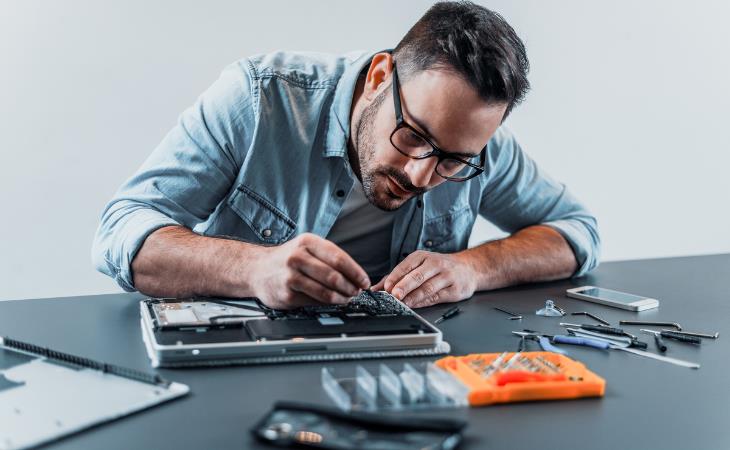
If you’ve tried all the above steps and your laptop still won’t turn on, there may be an issue with the motherboard or other internal parts. In this case, a technician can perform diagnostics and repairs.
- Consider warranty options: If your laptop is still under warranty, the manufacturer may repair it for free.
- Weigh repair costs: If your laptop is out of warranty and repair costs are high, it may be more economical to purchase a new one.
Remember, even a malfunctioning laptop may have some reusable parts, so look into recycling or upcycling options.


